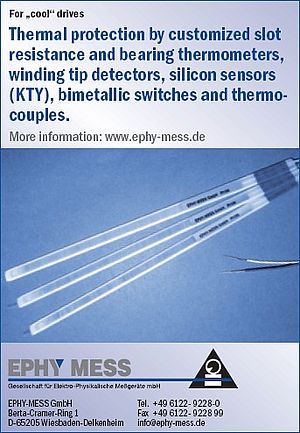Besides the predominantly used platinum measuring resistors KTY-sensors are often used for temperature measurements. Their electro-static sensitivity is eliminated by a KTY-sensor with an integrated overvoltage protection element.
The use of the relatively cheap and quite small building KTY-sensors has often been problematic due to their sensitivity against ESD (ElectroStatic Discharge). Standard KTY-sensorscan be pre-damaged by voltage impulses for example due to static charging. This is risky, because no significant change of the resistance value can be measured. Therefore it is not sufficient that only the manufacture labels and equips the production and testing areas by suitable preventive measures in conformity with ESD. Even users and secondary producers need to take suitable precautionary measures. Practice experiences reveal that KTYs are often handled without any appropriate ESD security measures due to ignorance or superficial cost aspects.
It’s treacherous, that voltage impulses don’t necessarily affect the functionality or damage it immediately. In the later field application a creeping failure may lead to erroneous measuring values. If the sensor is e.g. mounted and sealed in the coil-head of an electricmotor or generator, then this would have to be newly winded or even exchanged.
Examining the possible pre-damages of KTY-sensors by ESD impulses resulted in is a sensor that is a cost-effective alternative to the preventive measures actually necessary for standard KTY-sensors: the assembled EPHYMESS KTY-sensor with integrated overvoltage protection.
Applied for a patent, the sensor is characterized by the following technical characteristics: no impact or change in resistance signals in comparison to standard KTYsensors, specified protection level against overvoltage of at least 2 kV at the bare wire ends of the supply line., operating temperature range: -40….+150°C in the area of the protective element and in the area of the temperature sensor +155°C (ISO-class F) or+180°C (ISO-class H).


















